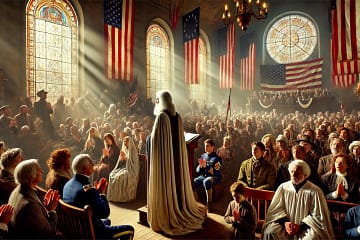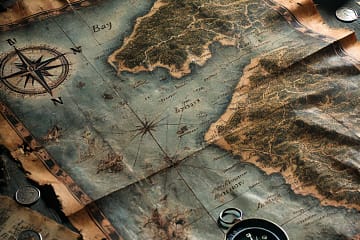“Its a jungle out there” is the most common phrase you will hear from any business leader. Incumbents use this when they are trying to defend their territory. Challengers use this when they are trying to trying to expand aggressively. Startup leaders use this every time they ask for more funding for their high revenue but high loss making venture. If its a jungle, maybe the greatest book ever written in the context of jungles can be of some reprieve to them. I recently read The Jungle Book for the first time and was astounded to learn that its more that just about Mowgli. Read this book summary to find 5 hidden business lessons one can learn from The Jungle Book:
1. Survival of the Fittest (VUCA World)
Mowgli was the human child that was raised by the wolves. We have all heard of the joyful animated Mowgli, but Rudyard Kipling’s Mowgli’s life is anything but joyful. He was a two legged animal in a jungle full of four legs, tails, wings, fins and scales. In the initial years he was protected by the wolf pack’s leader, trained by the black panther and educated by the wise bear, while constantly reminded by the tiger that his days are numbered. Once the leader lost his grip on the pack, Mowgli was ousted.
He fled to a human village where he herded bullocks and cows. Later he used his jungle knowledge of animal kingdom and human knowledge of herding to eliminate his biggest rival, the tiger. But since he has angered the elders villagers, he was pelted with stones, making him run to the only home he has known, the jungle. He first arrived in the jungle as a human child, grew to become a wild but trained animal, and then later returned as a king of the jungle.
How: Mowgli first learnt the trade of the jungle. Then he adapted to lifestyle of humans. Later he used the combined knowledge to gain the upper hand over the tiger.
e.g.: ITC (Indian Tobacco Company) was a tobacco company. Now 45% of their revenue comes from FMCG and Hotels.
2. Find the Blue Ocean (Blue Ocean Strategy)
Sea Catch (a seal) has been following the usual tradition of seals. Every spring he would swim to the same island to capture a tiny portion for his family to live on. Fighting for that spot is all he had known and continued to do so even when men became aware of this tradition and made it their seal hunting ground. Sea Catch’s son Kotick was born different. Not just the color (white seals are a rarity) but the mindset as well. Once he experienced the tradition and watched clubbing of fellow seals by men, he decided to go on his own to find a Manless Island.
Every spring, when his batchmates were fighting, marrying and rearing baby seals, he would swim to a different island, meet countless unknown sea creatures, and learn from their wisdom. Soon Kotick found the land but his fellow seals were not interested. So he fought. Using the strength, knowledge and skills learnt on his sea exploring missions, he made them bow to his will. Within a few years the seal colony was flourishing in their new home where no man has ever set his foot.
How: Kotick spent the time understanding key aspects required for his goal, the survival of his kind. He did something no other seal wanted to do and eventually became their ruler.
e.g.: Apple in the smartphone world.
3. Know your Competitor (Competitor Analysis)
Rikki-Tikki was a mongoose who was separated from his family and adopted by humans. While the humans treated him as a pet, Rikki Tikki never forgot the lessons he learnt during his upbringing. He was also highly aware that Mongoose and Snakes are birth rivals, a sentiment echoed by Nag and Nagaini, the cobra couple whose dwelling had been disturbed by Rikki Tikki’s foster parents. Rikki Tikki knew that he alone was not a match against the cobra couple. So he teamed up with Darzee and his wife, the tailorbird couple whose kids the cobra couple feeds on.
The first of the three battles ended in a draw. Then the mongoose experienced his first blood while battling a small snake. Later Rikki Tikki would use this learning to hurt Nag in the second battle with the human gunning Nag down. Knowing that peace is not an option, Rikki Tikki used Darzee’s wife as a decoy to lure Nagaini from her nest and destroy her eggs. This was to ensure that future is not lived in fear. Having gained an assailable lead, Rikki Tikki followed Nagaini into her hole and emerged victorious, thus ending the war. This feat also gained him countless rewards from his foster parents.
How: Rikki Tikki could have lived in the shelter of his foster parents. But he did his research, found weak spots of the rivals and even destroyed their future growth potential.
e.g.: Pepsi started after Coca Cola. While Cola war is still on, Pepsi have utilized inorganic growth to generate twice the revenue that Coca Cola does.
4. Embrace your Destiny (Succession Planning)
Kala Nag (Black Snake), an Elephant has served the British Indian Government for half a century. He has been trained by three generation of Toomai. First one was monikered ‘Toomai of the Elephant’, then the son, Black Toomai, and finally the grand son, Big Toomai. Big Toomai’s eldest son, Little Toomai, felt that it was his birth right to take the mantle as that was the world he was growing up in. A world where your job is defined by the family you are birthed in.
Little Toomai did not see that as an hindrance, but as an opportunity. He was young but full of confidence about his place in the world. His tenacity of hunting wild elephants earned him the ear of the British General. The General promised that when Liitle Toomai has seen ‘elephants dance – a joke among elephant cathers’, then Little Toomai can become a trainer plus hunter. Now Little Toomai who didn’t know the joke wasn’t perturbed but energized. As luck would have it, Little Toomai followed Kala Nag to a gathering of 70+ wild elephants, reported the same to the British General and earned the title his great grandfather had held, Toomai of the Elephants’.
How: Little Toomai knew what he would become. He used that as a stepping stone to improve his standing in his world.
e.g.: Tatas, Birlas, Ambanis have taken their family business from strength to strength.
5. Importance of Hierarchy (Organizational Structure)
Viceroy of India and Amir of Afghanistan decided to have a show of strength. On the Indian side, thirty thousands humans were accompanied by thousands of animals, mainly camels, elephants, horses, bullocks and mules. One night, a camel, a mule, a horse, a bullock and an elephant inadvertently gathered for a discussion on their importance to the army. Ironically every animal considered itself superior and disparaged the other. It was after a long night of back and forth communication they all understood their place in the Viceroy’s army.
What they failed to acknowledge was their real place in the Viceroy’s army. Outside their reality, animals obey their drivers, drivers their sergeants, sergeants their lieutenants, lieutenants their captains, captains their colonels, colonels their brigadiers, brigadiers their generals, generals their Viceroys and Viceroys the Queen of England.
How: Not every person is equally important in an organization. But organizational structure should be such that everyone feels important.
e.g.: Flat hierarchy at middle manager level
If you have managed to read till the end and are thinking, “is this a joke?’, then you are right.
This is a parody of how business leaders take instances from their lives and make it a lesson for all.
In case you feel the same, them do mention it in the comment with an example of your own.
But I hope that this book summary of The Jungle Book made you aware that The Jungle Book is not just a book about the jungle, but also a description of human world.
Note: In case you are looking for a Product Management course, I would highly recommend joining this cohort-based course – ISB Executive Education – Product Management program
PS: You can connect with me for review or referral discount (link for referral discount)


